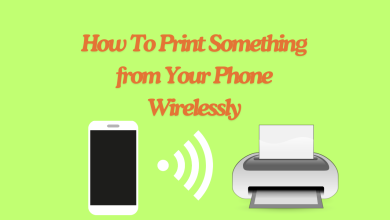How to Clean Battery Corrosion: 4 Safe Ways for Best Results
- Battery corrosion occurs due to chemical reactions when batteries are left unused or exposed to extreme conditions, leading to a buildup of corrosive substances at the terminals.
- Cleaning steps include disconnecting the batteries, neutralizing the corrosion with baking soda or vinegar, and cleaning up with isopropyl alcohol and a microfiber cloth.
- Safety and disposal are crucial; wear protective gear when handling corroded batteries and dispose of them at designated e-waste facilities to avoid environmental hazards.
If you’ve ever tried to pry open or use older tech, that has been collecting dust for quite some time, you’ll find that it probably won’t work at first. Upon inspection, you’ll realize that the power delivery mechanism is impeded by a weird-looking substance around where the battery or cell is inserted.
Most battery-powered gadgets, even cars, use lead-acid and nickel-metal hydride batteries, which are prone to leaking and causing a buildup of corrosive substances at their terminals. This guide will help you understand the general idea behind leaking batteries, why this happens, and the measures that can be taken to (safely) address the issue.
Table of Contents
How Do Batteries Work?
Batteries, especially lead-acid, and nickel-metal hydride, which you will commonly find in any household battery-powered devices, work by converting chemical energy into electrical energy, on the most basic scale.
For a better understanding, the AA or AAA batteries, used in almost all small-scale consumer level electronics, are part of the nickel-metal battery spectrum. On the other hand, most cars, including some EVs, use SLI lead-acid batteries to power to the car’s systems, such as onboard computers, infotainment system, headlights, and power seats.
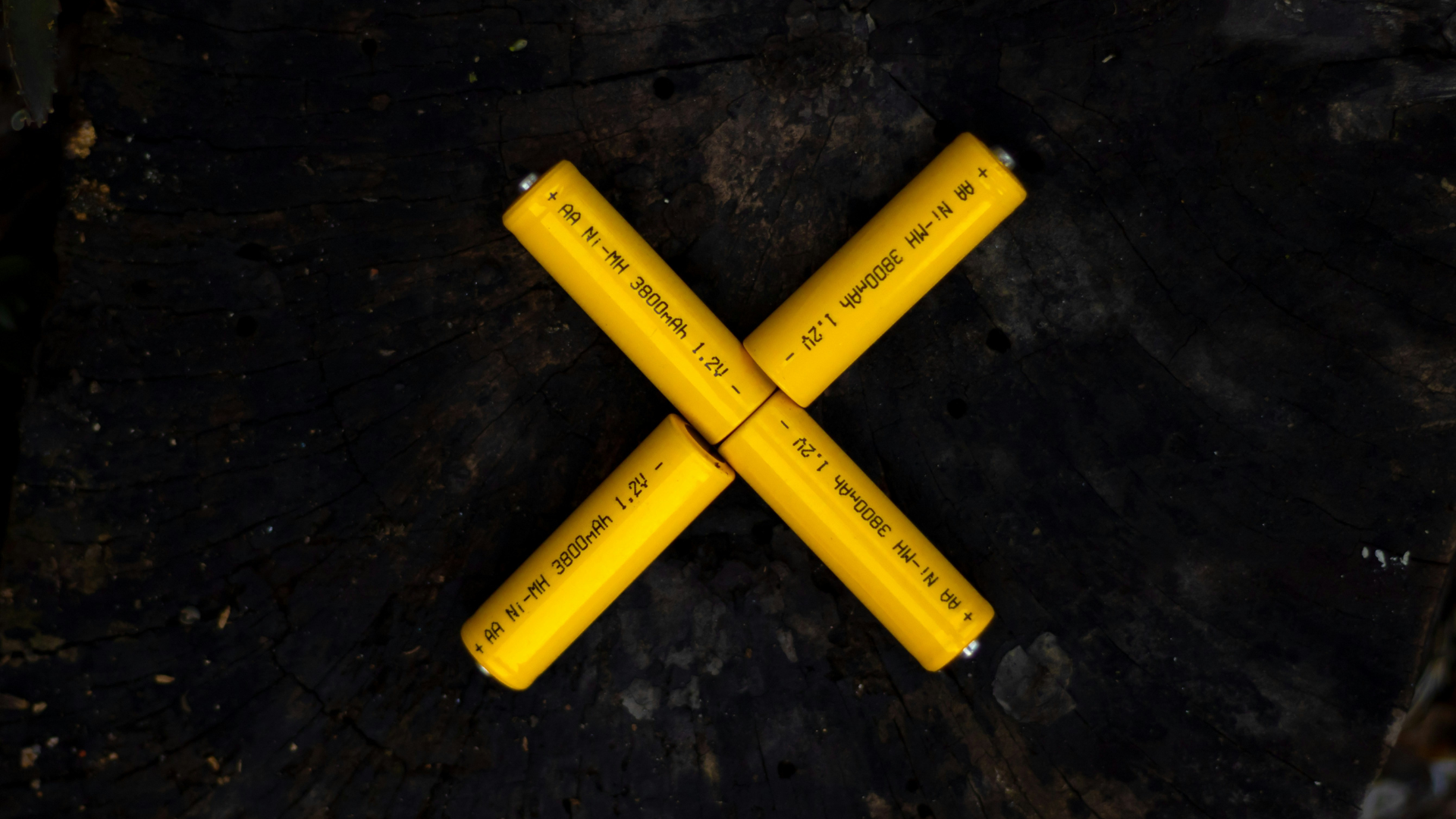
While a complete explanation of these batteries’ workings is beyond the scope of this guide, it is important to note that, regardless of the type mentioned above, the underlying issue with each of them is that with time, they tend to leak out their electrolytic substances. This can be identified as a powdery, crusty, colored (often white) residue at the battery terminals, which—not to be mistaken—can be dangerous.
READ MORE: Reverse Charging: How to Use Your Phone as an Improvised Power Bank ➜
What Causes Corrosion in Batteries?
When you put a battery-powered device for long periods of disuse, without disconnecting it from its power source, the batteries can self-discharge, and since (as we’ve learned above) batteries rely on chemical processes to generate electricity, these reactions can lead to the buildup of the powdery, corrosive substance.
In extreme temperatures, or environments with higher levels of moisture, you’ll find that most gadgets with cells or batteries tend to cause corrosion more frequently. This is because both of these factors provide the ideal conductive medium for the reactions to take place, which in turn, can accelerate the rate of corrosion.
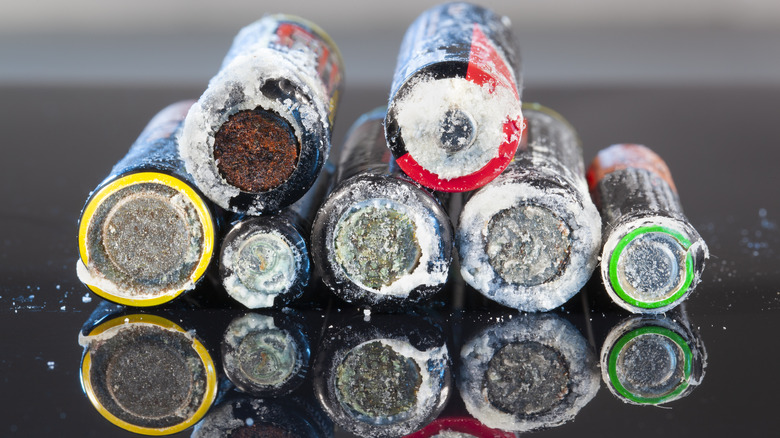
Lead-acid batteries, ones which are used in most cars, face the same issue, which happens because the sulfate ions in the electrolyte (sulfuric acid) often tend to crystallize on the battery plates, which in turn can prevent the battery from charging and discharging at the rate it used to. This sulfation can block the active surface area, producing corrosive byproducts.
In some non-ideal scenarios, is is also possible that you don’t see the buildup of corrosive substances around battery or cell terminals. This is because the battery may be leaking from someplace else, and might have a cracked shell.
How to Clean Battery Corrosion?
Batteries that’re over-corroded may not be cleanable, and are generally recommended to be disposed off, but some that have leaked electrolytic substance over their terminals, or onto the device itself can be cleaned off.
↪ Pre-requisites
Safety should be your first priority, which is why it is important to wear the correct gear before starting off. If possible, try and wear eye protection, along with gloves and use an area that is well-ventilated and doesn’t have an overly hot temperature.
If you spill some corrosive material onto your skin, it can cause irritation and burns, which is why understand what you need to do if things go south.
↪ 1) Disconnect the Batteries
The first step is to disconnect the batteries. Whether they are larger ones within your car or smaller AAA batteries, break the active power cycle to safely clean out the corrosive buildup on the device and battery itself. In a car, carefully disconnect the black (negative) wire first, followed by the red (positive) one. In rare cases, the wiring may be damaged and need replacement.
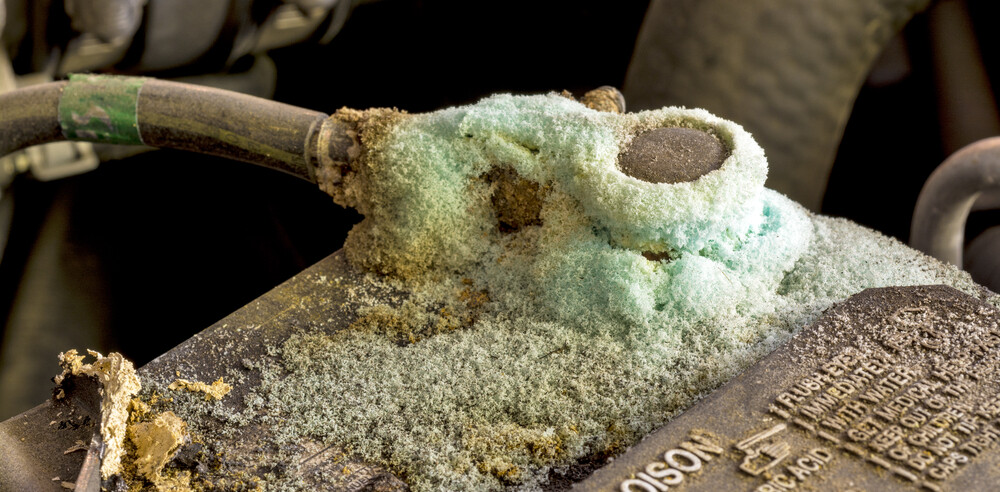
In cases where the wire is jammed-pack onto the terminal, try using a penetrating oil, such as WD40 to try and loosen the grip. In some cases, the corrosion on the terminal is so bad that it calls for the terminal itself to be replaced completely.
READ MORE: How To Make A Lead Acid Battery Charger? ➜
↪ 2) Neutralize the Discharge
Once the batteries are disconnected, the goal is to neutralize and brush off the caustic substance on it. For AAA or small-scale batteries, the procedure would slightly vary for, say, a car battery. In a car battery, you’d want to apply a paste of baking soda and water to neutralize the discharge.
For smaller AAA batteries that discharged a basic substance, apply a few drops of lemon juice or vinegar to the affected area, either manually or with cotton swabs. In both cases, the process will take a few minutes to react with the discharge, start to fizz, and slowly disintegrate.
↪ 3) Use Isopropyl Alcohol (Optional)
This step is recommended for small-scale electronics where the corrosive substance has spilled onto the device itself, or the metal springs that connect the device to the cell, or battery. Use isopropyl alcohol (preferably 99%) to clean up the residue left behind from neutralizing the substance. In addition, since the alcohol dries up quickly, it won’t leave moisture behind and is generally considered safe to brush off excess residue.
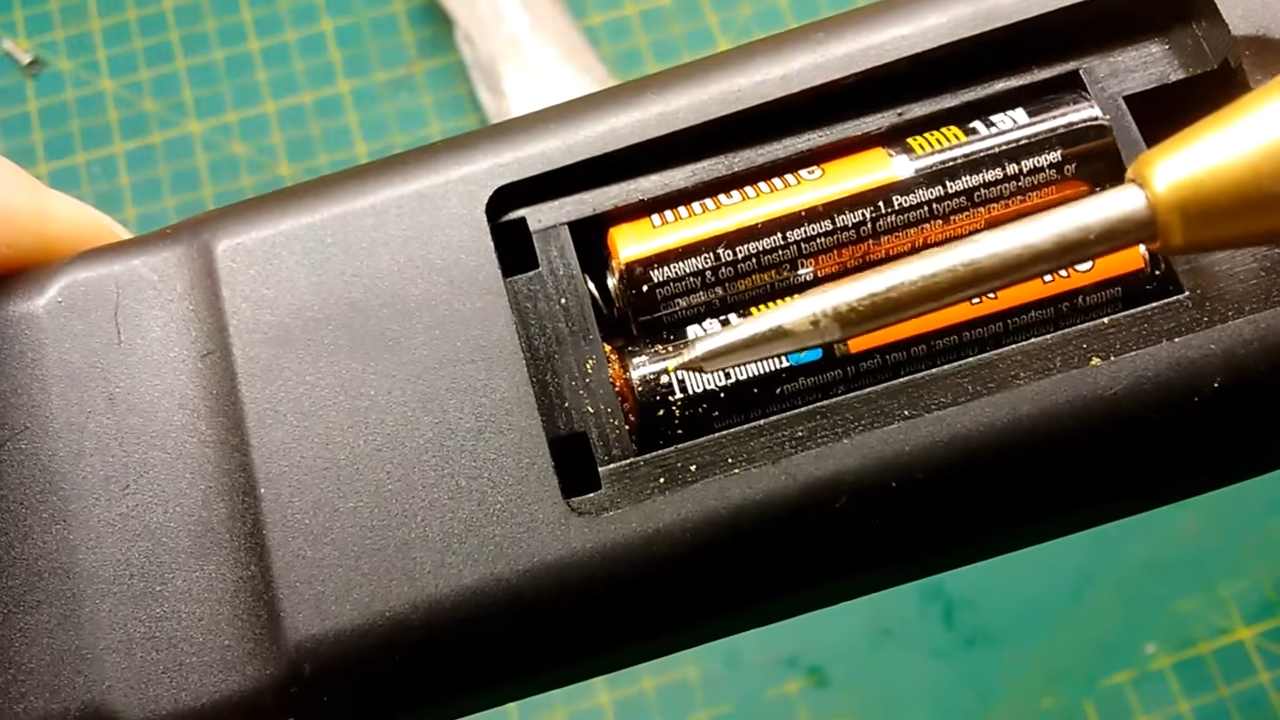
↪ 4) Clean Excess Residue
Use a clean, microfiber cloth to gradually scrub off all of the excess residue off of the terminals. After doing so, leave the device, or car as is for a while to allow for the terminals to dry. If available, apply a thin coat of terminal protector or dielectric grease onto the terminals to firstly protect against corrosion in the future, and allow for the newly exposed area to be resistant to moisture.
What Next?
Once you’ve cleaned off the excess corrosive material, make sure to take due care in the future. First off, inspect your batteries visually from time to time to see if there is a buildup of unusual substances. Store the battery properly, in a decently ventilated area, and keep it clean.
Like mentioned above, use a terminal protector, and (for non-car batteries), avoid overcharging. Try and disconnect the batteries when the device in question is not in use.
READ MORE: Is Wireless Charging Bad for Your Smartphone Battery ➜
Is it Safe to Solve Corrosion Issues in Battery?
While it is generally safe to handle corrosion on batteries, the decision on whether to get your hands off the corrosive substances or the battery itself lies in the situation at hand. In some cases, especially when there is a lot of buildup, it is advisable to either consult a professional or use a different cell.
The corrosive substance that you see on your batteries’ terminals is normally caustic, and if not handled properly, can damage your eyes and skin. While it is also not ideal to toss out everything slimed with a crusty layer of corrosive material, due care by wearing protective equipment should be taken to ensure that the substance is safely removed.
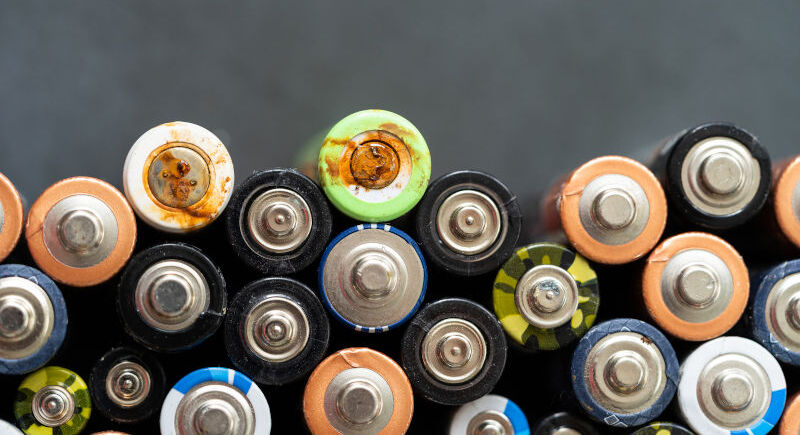
Some batteries that leak due to cracks in their case or shell are recommended to not be used, or cleaned. This is because even if the caustic substance is cleaned, the battery will remain unsafe for operation and cause serious harm if not appropriately disposed of. It is important to understand that batteries can also explode or cause fire, so take due care while handling damaged batteries.
↪ Battery Disposal
If you decide that the battery in question is not in a condition to be used any further, it’s important that you safely and responsibly recycle it. For that to happen, there are a few considerations to keep in mind. First off, try not to toss your battery out in the garbage, since it has chemicals hazardous for the soil as well as the water sources, and marine life.
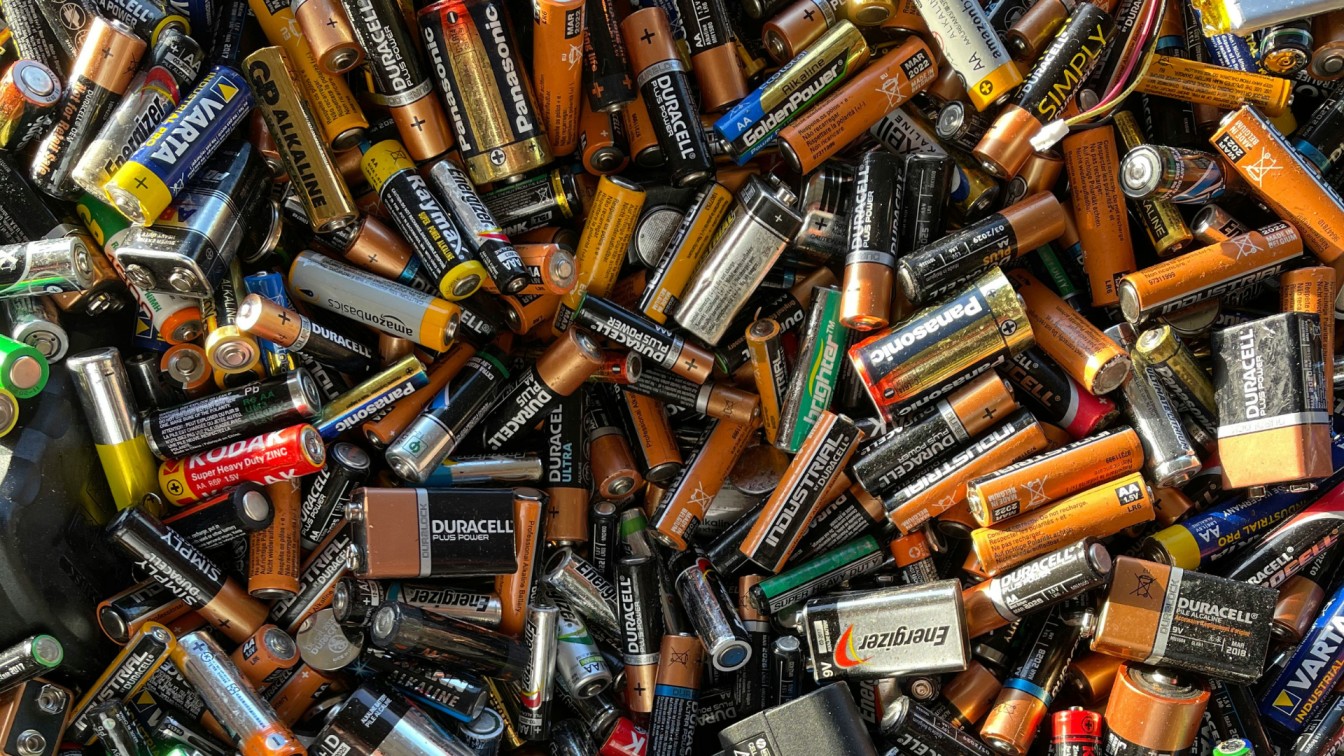
At first, look for any hazardous waste facilities that have the necessary equipment and knowledge to handle things like corroded batteries. If not, try and look towards your local battery or automotive vendors to see if they accept them for recycling.
Look into the local regulations for your country or region to see what the law says regarding recycling electronics and batteries. It’s possible that the government may’ve designated specific drop-off locations for such equipment.
READ MORE: Is it True That Power Banks Damage Your Phone’s Battery? ➜
Conclusion
While it’s common for batteries to leak corrosive substances over time, it’s also important for the end-user to be aware of the potential hazards, and take necessary steps accordingly. Corrosive batteries can be revived but only to an extent. It is generally recommended to prioritize safety and opt for a new battery in case the older one’s fulfilled its age.
FAQs
On the surface level, a corroded battery won’t let you supply power to the device itself, since the caustic substance is literally a physical barrier in between. Unequal or improper flow of electricity can sometimes cause short-circuiting, which in some cases, can have dire consequences.
While it is generally considered safe to neutralize the corroded substance on batteries, due care should be taken while handling larger equipment. In cases where the corrosion is excessive, look to dispose of the battery completely and replace it with a new one.
Try and look for local e-waste recycling drop-off facilities, since it is a safer option than dumping them directly in the trash. The latter option can be dangerous and can cause fires if not handled with due care.


